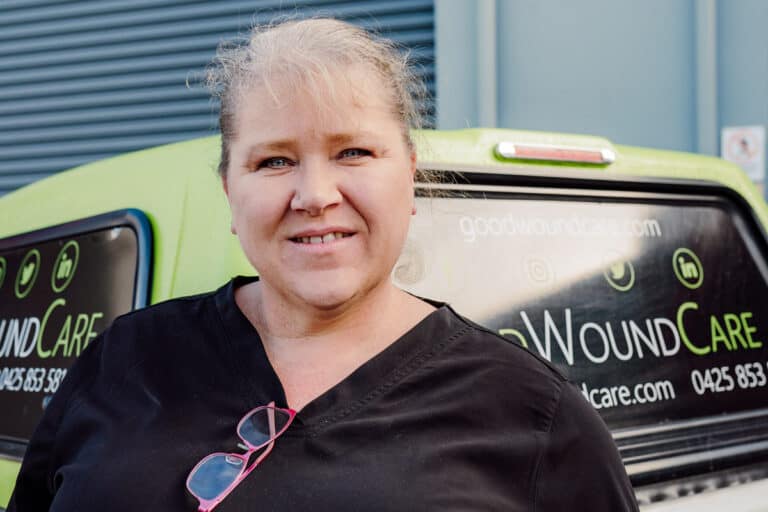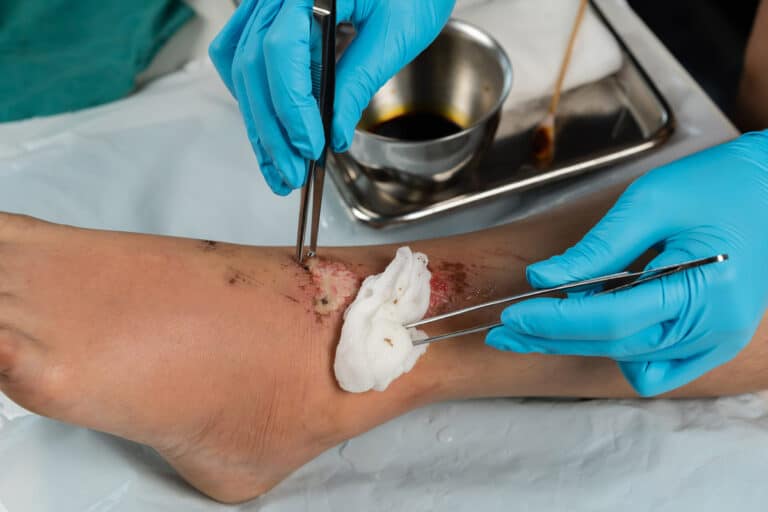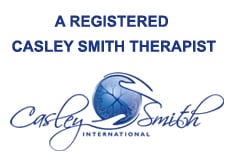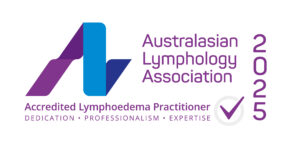About Good Wound Care
Good Wound Care is a premium wound management service that comes to you.
Founded and operated by Donna Nair, an experienced advanced practice nurse, Good Wound Care provides complex assessment and management of hard to heal wounds and chronic oedema. We service the Geelong and Ballarat communities and offer a Telehealth wound care service across Victoria.
About the Service
Good Wound Care was established in 2019 with a simple vision to provide easier access to quality wound and lymphoedema services and is unique by combining these clinical portfolios. The service is a team approach, from our growing number of nursing and allied consultants, to reception, admin and IT.
Our mission is to empower people’s ownership and enhance their self-caring or decision-making capacity for their chronic wound or lymphoedema. Good Wound Care exists to help you achieve your specific goal, whatever that may be.
We practice from a trauma informed care model, aiming to meet people where they are at. This focusses on acceptance, inclusion and belonging; being considerate, compassionate and inclusive of everyone.
Because assessments are provided in the client’s own home or their place of care, the service is able to work closely with your health care team. Good Wound Care can accommodate the needs of people living with a disability, those who struggle leaving home and who find navigating the complex health care system a challenge. Visiting people at home also affords a more rounded picture of the clients’ needs as they live with a complex wound or lymphoedema.


About being Good Wound Care
Okay, so Good Wound Care has a special focus on wounds – but what makes it Good?
The definition of “good” is highly subjective. Try first answering this question. “If Good Wound Care had never met you, would it have mattered to you or your wound?”
Good Wound Care is a gentle and caring service that aims to provide the best, most up to date, evidence informed wound care for our clients in an approachable and reassuring manner. From the first visit with Good Wound Care, we strive to make sure clients have a well understood plan with personalised choices for a way to move forward, that lasts well beyond the first visit. We believe, these are the cornerstones that support GOOD wound care, because it makes a lasting difference and matters to the person with the wound.
You can listen to Donna talk about what makes for Good Wound Care on The Wound Guy Conversations or the High Performance Nursing Podcast.
About Donna Nair
Donna is a registered nurse, who has worked at an advanced practice level in wound management for over 20 years in the community, acute and residential care sectors. Donna has additionally worked in senior wound roles in outpatient wound clinics, leg clubs, primary care, district nursing, rehabilitation, palliative care and the regional health department. Donna has completed level 1 and 2 accredited ALA post-graduate Lymphoedema training (Decongestive Lymphatic Therapy for the Management of Lymphoedema), and is a registered Casley-Smith Therapist. Having developed extensive peer and industry networks, Donna brings a robust clinical portfolio of expertise, resources and experience to benefit Good Wound Care clients.
Donna and the team undertake regular professional development activities to stay up to date in contemporary practices. Donna has presented abstracts at state, national and international wound conferences and in 2022 won Best Case Study at the Wounds Australia National Conference. Donna is a regular volunteer to Wounds Australia, having facilitated Regional Twilight Seminars and serving on the Victorian state branch of Wounds Australia as member and chair. Donna currently serves as a Faculty member on the Australian Wound and Skin Alliance.
In 2020 Donna was shortlisted for a Barwon Best Care Award: Living Our Values for ‘Innovation’ in a Covid-19 response to mask-related skin injury. In addition, Donna was recognised as part of 2020 International Nurses Day at Barwon Health, and in 2011 received a staff recognition award from the Grampians Department of Health for demonstrated commitment to collaborative relationships and responsive leadership.

Donna maintains professional memberships with:
- Australian Wound and Skin Alliance – Faculty member
- Wounds Australia
- International Wound Infection Institute
- Australasian Lymphology Association
- Size Inclusive Health Australia
- Association for Size and Weight Inclusivity in Medicine
- British Dermatology Nursing Group
- TMLEP

The Cost of Hard to Heal Wounds
If almost half a million people each year in Australia suffer with a wound that is not showing signs of healing, what does that really cost the individual?
This is more than money can quantify, because wound care economics are so much more than what it costs to put a dressing on top.
Non-healing wounds cost the person with the wound a loss of independence, reduced social and employment freedoms, depression, extra medical visits, hospitalisations, medications, infections, pain, odour and long-term dressing costs, just to name a few. However, at Good Wound Care, we consider the additional damaging cost of having a chronic wound is lesser known. When your wound fails to heal, wound tissue becomes more resistant to healing.
So even if your wound looks the same as it did 3, 6, or 12 months ago, the tissue is more inflamed, scarred and less likely to progress. If you have swelling that has been present for longer than 3 months, your lymphatic vessels are struggling to remove the fluid, also making healing more difficult. It is estimated up to 50% of the ageing population have chronic oedema and in Australia, up to 74% of people with chronic oedema, also have a wound so it’s important to seek help before these factors make healing difficult.
Many people do not manage to see a dedicated wound clinician until their wound is many months or years old and many treatments and dressings have been tried and exhausted. By this stage, the wound has cost a great deal and patients are desperate to find ways to stop the wound from taking over their life.



